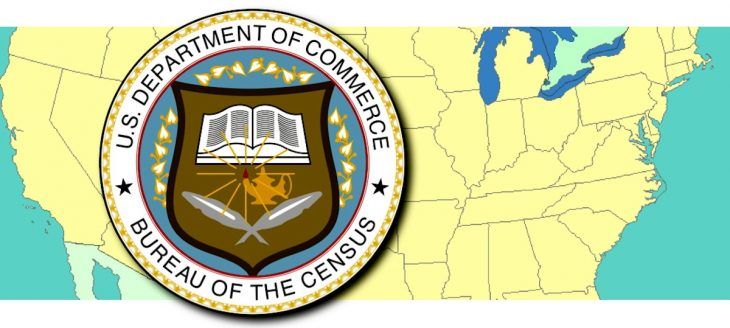Census Bureau: In 2019, state’s poverty rate fell while uninsured rate rose
by September 19, 2020 10:20 am 660 views

The U.S. Census Bureau’s American Community Survey portrays an Arkansas in 2019 where the poverty rate was declining but the uninsured rate was rising. Also, the number of foreign-born residents was growing, and more of them were becoming naturalized citizens.
The survey found the state’s percentage of incomes below the poverty level the previous 12 months fell from 12.7% in 2018 to 11.7% in 2019. The poverty threshold for a family of four that year was $26,172.
Among married couple families in Arkansas, the percentage of families living under the poverty level was 6.2%, compared to 30% of homes headed by a female with no spouse present. Among those latter homes, 38.9% of homes with related children under age 18 were below the poverty level, while 43.9% were below the poverty level when all the children were under age 5.
The survey’s findings were released Sept. 17. Data was collected throughout 2019 using a sample size of about 3.5 million addresses. Questions primarily were asked online or by mail with follow up by interviewers. Congress and states use the survey to determine how funds are distributed.
The median household income in Arkansas was $48,952. That was an increase of 2.4% from 2018. The mean household income in Arkansas was $68,219, an increase of only $243 from the year before, or .35%. Broken down by income category, 7.1% of households were living on less than $10,000, while 3.8% were living on $200,000 or more.
Meanwhile, the state’s uninsured rate was rising. The survey found that 9.1% of Arkansas’ non-institutionalized population did not have health insurance coverage at the time they were contacted, an increase from the 8.2% who were uninsured in 2018. Among Arkansans under age 19, the uninsured rate increased from 4.5 % to 5.9%. Of people with insurance, 59.3% had private coverage while 44% had public coverage.
Arkansas’ population rose slightly to 3,017,804 people in 2019, according to the survey.
The survey found there were 154,286 foreign-born residents living in Arkansas – a 7.4% increase from 143,709 the year before. Of those, 37.4% were naturalized citizens, an increase from 35% the year before. Almost 74% of the state’s foreign-born residents entered the state before 2010.
Of the foreign-born residents, 61.7% came from Latin America while 22.8% came from Asia. A language other than English was spoken in 7.6% of the homes.
The survey found that 76.7% of Arkansans were white in 2019, and 15.5% were African American. Meanwhile, 7.7% considered themselves to be Hispanic or Latino of any race. More than 97% considered themselves to be one race.
Of the 1,163,647 households, less than half, 47.5%, were composed of married couple families, which was down from 47.9% the year before. Another 5.6% of households had a cohabitating couple. The year before, it was 5.7%.
Of the population ages 25 and older, 23.3% had a bachelor’s degree or higher, the same percentage as in 2018, while 87.5% had a high school diploma or equivalent, compared to 87.2% the year before. The survey found that 89.5% of Arkansas households had a computer and 79.8% had a broadband subscription.
The survey found that 58.2% of Arkansans 16 years and older were in the labor force, an increase over the 57.9% who were in the labor force in 2018. Moreover, 55.2% of those were employed, while 2.8% of the civilian labor force reported they were unemployed.
The pre-COVID survey found that 3.5 % of Arkansans worked from home, while 82.4% drove alone. The mean travel time to work was 21.9 minutes.
Of the 1,325,091 employed civilians, 78.3% were private wage and salary workers, while 15.8% worked for the government and 5.6% were self-employed in their own businesses that were not incorporated. Another .3% were unpaid family workers.
Broken down by industry, 24.2% were employed in educational services, health care and social assistance. Another 13.8% were employed in manufacturing, a decrease from 14.3% from the year before. Another 12.9% were employed in retail trade, while 8.4% were employed in arts, entertainment, recreation, and accommodation and food services. The construction industry saw an increase from 6.7% of the workforce in 2018 to 7.1% in 2019. On the low end, 1.2% were involved in information.
The Census Bureau released the results of another survey, its Current Population Survey Annual Social and Economic Supplement, which primarily collects data in March and asks more detailed questions in person over the phone. The two surveys also ask questions regarding different reference periods – the ACS regarding the prior 12 months, and the CPS ASEC about the previous calendar year.
For those reasons, the two surveys produce different results. The ACS lists a poverty rate of 12.3%. The CPS ASEC, which is the official source of national poverty estimates, says the national poverty rate in 2019 was 10.5%, a drop from 11.8% in 2018 and the lowest rate since estimates were first published in 1959. Thirty-four million Americans lived in poverty in 2019, which was 4.2 million fewer than in 2018.
The CPS ASEC found nationally that median income household increased 6.8% in 2019 to $68,703. The American Community Survey said median household income was $65,712.
Nationally, 9.2% of respondents didn’t have health insurance at the time of the interview, according to the American Community Survey, which was an increase from 8.9% in 2018. The percentage of people without coverage increased in 19 states in 2019 and decreased in one. According to the CPS ASEC, 8% were not insured at any point during the year.
